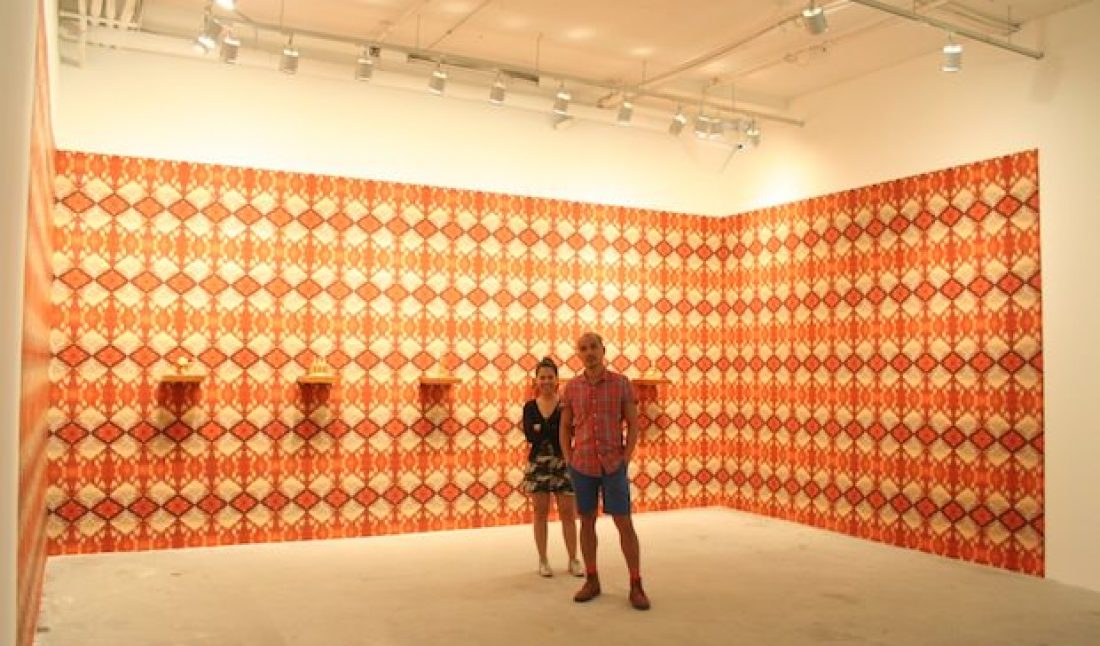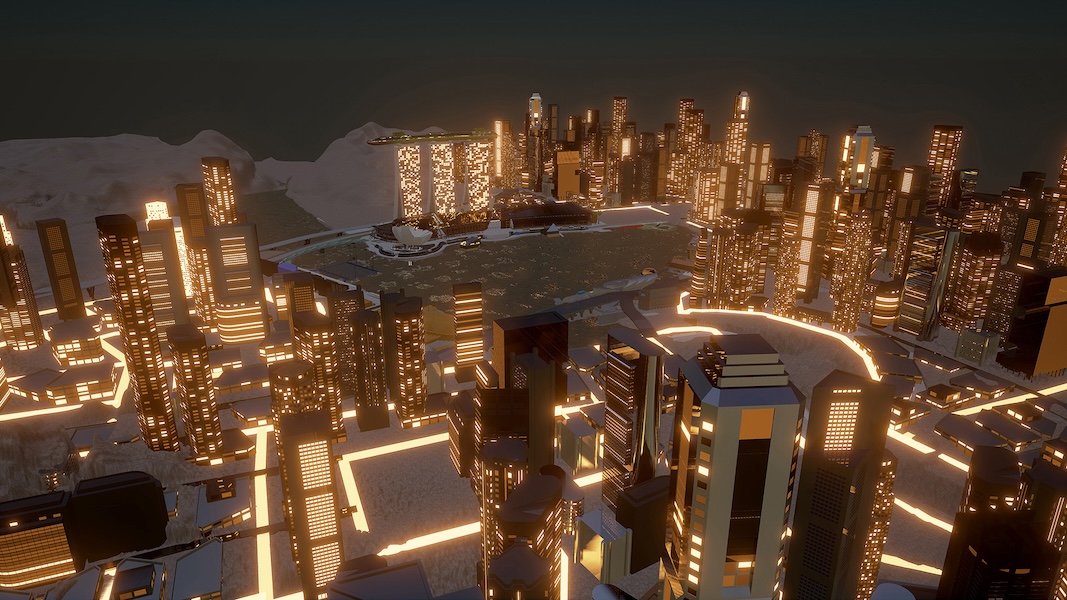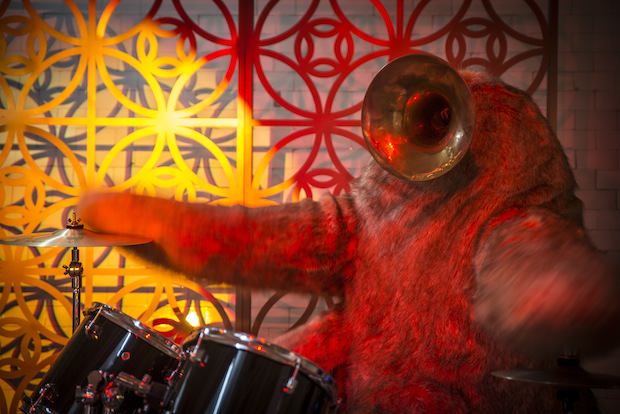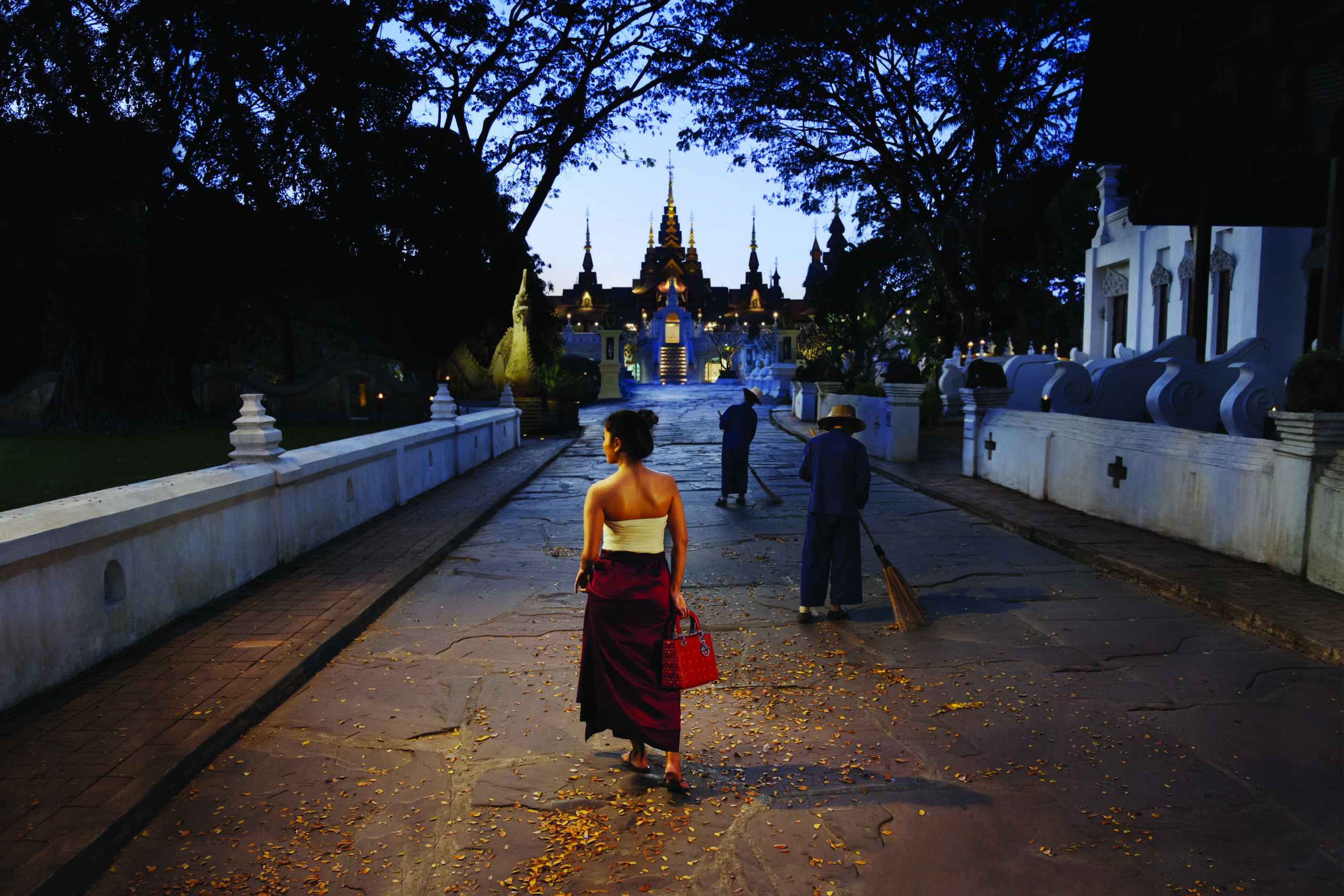“Market Forces: The Friction of Opposites” is an on-going exhibition/platform established by Osage Art Foundation and Sigma Projects in Hong Kong, 2012 (running though July 17). The first edition, which opened in May to coincide with the final edition of ArtHK showed 13 artists – ten from Hong Kong and one each from Indonesia, the Philippines and Thailand – who were invited to develop and present projects provoking debates around the notion of value in the contemporary art world. In 2013, the second iteration of “Market Forces” coincides with the inaugural edition of Art Basel in Hong Kong, and features a series of curated sections, each presided over by a curator; Ark Fongsmut, Lee Daehyung, Qiu Zhijie, Alia Swastika, Joselina Cruz, with Osage Art Foundation also presenting a section of works.
Joselina Cruz, along with artist Pio Abad, presented a single installation: Oh! Oh! Oh! (A Universal History of Iniquity) (2013). In this, the chandelier from the Philippines International Convention Centre (PICC), constructed for the 1976 World Bank convention under the “reign” of Imelda Marcos, forms the wallpaper that sets off five gaudy, plastic gold perfume bottles purchased from London’s Whitechapel Market, including bottles that take the form of a camel, a dagger, the Burj Khalifa, the Burj Al-Arab. The work references (and highlights) “two powerful emerging cultural systems” – the UAE and Hong Kong – in relation to the context of the exhibition itself.

In this frank discussion, Cruz and Abad talk about the ideas behind the installation at Market Forces, and how such ideas resonate with a wider, 21st Century discussion around art and its complicity.
WW: How did you conceive the idea behind Oh! Oh! Oh! (A Universal History of Iniquity)?
Joselina Cruz: When they invited me to curate a section of the show, and of course I was very critical of the entire thing when I learned what the idea behind Market Forces was all about. It was the idea of showing in a gallery space that is part of a foundation, during Art Basel in Hong Kong. I felt that the exhibition was trying to be critical from within the space that is being criticised.
Pio Abad: Hong Kong is also such a particular city and the market is such a dominant presence.
JC: Hong Kong is actually very market orientated, but more than anything, the fact that Art Basel is coming here was very important and this had to be put into context; I don’t think Osage would have staged this exhibition out of context – the intention here is to counter the art fair. So we thought about the market and how it related to the context of where this work would be presented.
WW: You mentioned this idea of the art fair, the foundation, and the gallery all being part of the context, which is inherently problematic in thinking about art production today and how it is so easy to become complicit in the very system you are critiquing.
JC: Yes and I think a lot of people don’t take that on.
WW: In the installation you have these specific visual references, the Burj Khalifa and the Burj Al-Arab as gaudy, kitsch perfume bottles for instance. It’s interesting because I just came from Art Dubai, where there was this discussion of the art fair being a free zone, or a compound within a compound, which is sort of similar to your problem with Osage being a gallery that exists within a foundation, staging an exhibition on market forces during an art fair.
PA: I think, the way you talk about compounds within compounds, my work operates in this way – it is a layering of the histories of soft power. There is the chandelier that forms the wall paper pattern, which is from one of the buildings Imelda Marcos commissioned as part of her cultural grand plan for Manila, and all these perfume bottles tell this architectural history in a domestic way.
So this idea of systems within systems within systems…I was trying to activate that with the work and the idea of power being domesticated. So the whole show kind of refers to architecture but it is essentially a show of wallpaper and perfume bottles, which goes against that grain of monumentality, which is what my practice is grounded on.
JC: So with Pio’s work, there is this idea of excess: the use of repeated images, and the idea of commodity. with its brashness.
WW: So you have this infiltration of commoditization into the domestic space, making us all complicit in these architectures of power, represented in this installation; itself situated within a commercial gallery during a major art fair, themselves somehow architectures of power in their own right?
PA: It’s interesting as well because this exhibition performs a service to the market: it is a survey of practices within this region; an emerging art exhibition that critiques the market but at the same time points the market to where interesting things are happening.
WW: But aren’t we all implicated in market forces?
JC: In the text I talk about the idea of “engaged autonomy” and how a lot of artworks these days cannot develop without the support or funding from a patron. You can’t produce massive works or even small pieces, especially critical ones, without someone backing you in a residency, for example. But you can actually create some sense of subversion if you are to work within the system and this is a challenge for curators, artists and writers as well.
I was in ARCO recently, and they were the ones who actually pushed for the conversations, the panel discussions and meetings et cetera. I was there for a biennale roundtable and it was a conversation about how important biennales were, how they are effective and what they are doing in countries of the Global South – Sharjah, Singapore, Gwangju, and others. It was a very interesting conversation because we were not speaking to Venice.
PA: They are too institutionalized now…
JC: The interesting thing is talking and looking at this from the outside. Sometimes I think that I should move out of this conversation between the colonized and the colonizer, but it is this conversation that we should be stepping away from now; it is no longer ijust about, for example, Hong Kong conversing with the British or the Philippines with the Spanish.
PA: The baroque always comes up here as an insistent sensibility.
JC: Yes and you can see the Spanish influence in the Philippines is very strong. You see it in the art as well.
WW: Pio, as an artist, how do you feel caught in the crossfire of these discussions taking place now around the market forces and the global shift, when thinking about how the art world is changing and how exhibitions, fairs and biennales are often adopting soft power approaches?
PA: I think the more you make work the more it becomes organic in terms of how you deal with all of it. I mean, I find the subtitle of this exhibition, Market Forces, quite strange: “The Friction of Opposites.” What opposites? Who are we opposing? Who or what do we have friction against?
JC: That’s why we had to contextualise this piece within the gallery, the foundation and everything happening around the art fair and Hong Kong.
PA: In a way, it is kind of a romantic view of what an artist should be doing; this constant need to resist. Resist what? And this is my position. I always come from a point of complicity otherwise you would be wracked with guilt; it’s like a Catholic guilt. What are you guilty about? Having an iPhone makes you as complicit in the world as being an artist.
WW: Then there is the hypocrisy in resisting a “system” while taking part in it, too….
PA: Right. And what I find interesting about this show and how it critiques the market is that it is like an art fair, and every nation has a booth! So I wanted the installation to be immersive but also autonomous from the other curated sections. I wanted it to be an autonomous mise-en-scene. But in general, this was never going to be a cohesive show. Hans Ulrich Obrist loves talking about the idea of the archipelago and it works in this show – the archipelago is all we have.
Joselina Cruz is an independent curator based in Manila, Philippines. She has worked as a curator for the Lopez Memorial Museum in Manila (2001-04), the Singapore Art Museum (2004–07) and the 2ndSingapore Biennale in 2008; a curator-in-charge of the Tàpies retrospective at the Singapore Art Museum (2005); co-curated All the Best: The Deutsche Bank Collection and Zaha Hadid, Singapore Art Museum (2006); and curated You Are Not a Tourist for Curating Lab, Singapore (part of the Singapore Art Show 2007) and Creative Index: An Exhibition in Manila (2010).
Pio Abad was born in Manila, Philippines in 1983. He started his fine art studies at the University of the Philippines and received a BA (hons) in Painting and Printmaking from Glasgow School of Art and an MA in Fine Art from the Royal Academy Schools. He was one of the finalists for the Dazed and Confused Emerging Artist Award in 2012.











